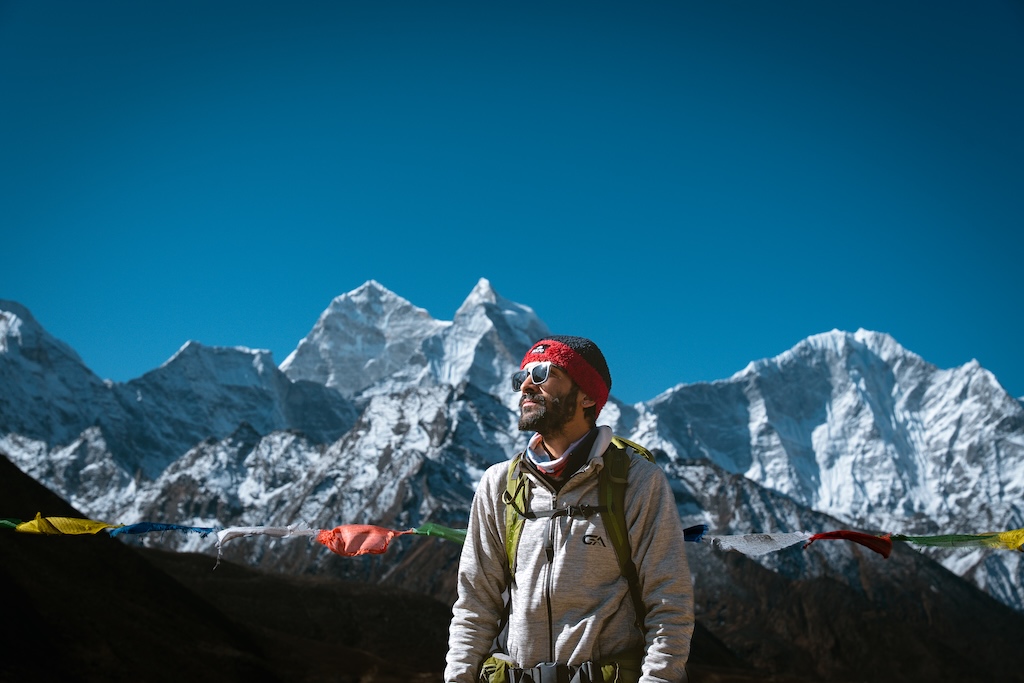Not Everyone Should Trek- Here’s Why!
Trekking is the purest adventure that reconnects you with nature. It challenges at times but also rewards with spectacular landscapes and mountain scenery. Moreover, you’ll meet with the ethnic community, experience their culture and way of life. All of this sounds so fresh, serene, and lively, right? But it’s not how it works for some. The serene trekking routes and mountains might attract you, but you must know that trekking isn’t suitable for everyone. Not everyone should trek for reasons.

Various things come into play when you embark on the trek. Whether it’s health conditions, physical fitness, age, pregnancy, or hygiene, you must assess everything before planning the trek.
This blog is for you and those who ought to think twice before lacing up their trekking boots for the trekking. Let’s explore!
People with Serious Heart and Lung Conditions
People with serious heart and lung conditions shouldn’t think about multiple-day adventures. Multiple days of adventure demands a high-functioning cardiovascular and respiratory system. For instance, Everest Base Camp Trek is an extreme elevation and demanding trek. Only the trekkers with perfect cardiovascular and respiratory systems conquer it. However, trekkers with cardiovascular and respiratory system issues get altitude sickness.
Here’s what heart and lung issues include:
- Heart disease
- Asthma or chronic bronchitis
- Chronic Obstructive Pulmonary Disease
- Recent history of heart and valve surgery, stroke, etc.
If you have any or multiple issues mentioned here, particularly with the amount of exertion required on multi-day, extreme-elevation treks, you shouldn’t consider the trek. These issues are risky and life-threatening.
As the oxygen level depletes at higher elevations, it puts your heart and lungs under strain. Should you consider trekking, we suggest you consult with a doctor and get the ECG and stress test. If you want to trek despite having these issues, we recommend Ghorepani Poon Hill Trek with Ghandruk, the least strenuous and mid-hill walk in Annapurna Sanctuary.
Uncontrolled Diabetes or Hypertension
If you’re a person with uncontrolled diabetes and hypertension, it’s not wise to embark on an adventure in the Himalayas. Here’s what unchecked diabetes and hypertension do to your body while trekking:
- Physical exertion
- Irregular meals
- Unpredictable schedules
- Cold temperatures or altitude changes
Type 1 or type 2 diabetes patients will have serious issues while trekking due to exertion and irregular schedules. High blood pressure can cause serious problems at high elevations where the air pressure gets low.
The nearest health posts don’t provide dedicated health services. Primarily, they treat patients with altitude sickness. Hence, if you’re a diabetic and hypertension patient, and if you get sick along the trek, you’ll need a helicopter evacuation to Kathmandu. And if the weather becomes unflyable, you’ll be at serious risk.
Severe Joint and Mobility Issues: Should Not Trek!
Trekking is all about the knee and physical mobility. Here’s what a usual day on the trek is like:
- Uneven trail, from less rugged to extreme elevation
- Steep sections (uphill and downhill for extended hours)
- Slippery trail due to rain and snow
- Stone paved stairs

Embarking on a high-altitude adventure only worsens your existing joint issues, such as advanced arthritis, knee and back concerns, or leg surgeries (recovering). The steep uphill and downhill walk over the stone-paved stairs at places exerts the knee. Trekkers with mobility issues often use knee braces and other supports but fail to walk fairly. It’s not that you can’t do the trek. But, you’ll face severe joint problems throughout the journey and may even need a helicopter or a horse rideback.
History of Severe Altitude Sickness- Shouldn’t Trek
In April 2025, we were on Everest Base Camp Trek with six trekkers. Among six, one of our clients got altitude sickness in Dingboche. We eventually sent him back to Kathmandu by helicopter for rapid descent.
Later, we came to know his history. In 2023, he experienced altitude sickness and was on an adventure at 3,500 meters. At that time, he was evacuated on a jeep to lower elevations.
Mind you, altitude sickness is no joke! It’s a life-threatening condition trekkers develop at higher elevations, especially on extreme-elevation adventures.
Here are some symptoms of altitude sickness:
- Mild to severe headaches
- Nausea and vomiting
- Difficulty in breathing
- Disorientation and confusion
- High Altitude Cerebral Edema (HAcE) and High Altitude Pulmonary Edema (HAPE)
With altitude sickness history, embarking on another trek can result in altitude sickness again. However, with adequate trek preparations and acclimatization, there’s a high chance that one can overcome altitude sickness.
Inadequate physical fitness- Trouble at times
Physical fitness is a must if you’re considering trekking in Nepal. You don’t need to be an athlete but must maintain a base level of endurance and stamina.
Trekking is exhausting at times. If you can’t trek at pace properly and get fatigued, it becomes frustrating and even, leads to altitude sickness. Muscle tears, ankle fractures, and other trek-related injuries are common among trekkers with poor physical fitness.
Here are some challenges trekkers face with improper physical fitness.
- Quickly getting tired, even after short walks
- Lack of muscle stretch with joint pain
- Struggle to walk even with a lightweight backpack at higher elevations
- Poor body balance and movement co-ordination
If you want to trek in Nepal despite having poor or inadequate physical fitness, you can still embark on less demanding adventures. Our detailed blog, Easy Treks in Nepal, gives you an idea of all the adventures that are absolute best and relevant in 2025.
Pregnant Women- After first trimester
Light walking is safe and necessary during pregnancy. However, multi-day treks at high-altitude terrain are an absolute no!
As a pregnant woman, your body needs the utmost rest and care. However, the higher elevation adventure can bring:
- Injuries or fractures on slippery trails
- Dehydration or fatigue
- Lack of medical health access
- Altitude based complications
All these associated hazards pose serious issues to pregnant women, and thus, they mustn’t consider any high-altitude adventure or multi-day treks.
Poor Mental Health/Anxiety related to Isolation- Can Trek!
Trekking is usually in remote locations in the Himalayas where your phone misses mobile networks, and you are exposed to unexpected situations. You may not have the comfort at the tea houses like at your sweet home. And at times, if trekking individually (solo), you’ll go through long hours of minimal interaction, often making you feel isolated.
If you’re dealing with poor mental health or anxiety, embarking on an adventure can be beneficial and troubling at times. You’ll feel connected with nature, get recharged, watch the elegant mountain scenery, etc. However, if you can’t handle minimal interaction, require a mobile network, and are not prepared for unexpected situations, embarking on a trek can be challenging.
Trekking, at times, can be mentally overwhelming for people with panic disorders, severe anxiety, or depression. It can snow heavily, get windy, or heavy rain out of nowhere. And as a trekker, you must be mentally prepared to expect the unexpected.
As a person with poor mental health who can’t handle the anxiety and panic a lot, it’ll be difficult to trek in peace. Handling the isolated environment and discomfort isn’t easy.
No Outdoor Experience- Can Trek!
If you’re dreaming of trekking in Nepal but have no outdoor experience, you can still make it. For novice trekkers, there are many short and easy treks with the best mountain scenery, culture, and luxurious accommodations.
Said this, if you lack physical fitness and mental strength, trekking can get overwhelming. However, upon being guided by our experienced guides, you’ll have a wholesome trek experience.
Check out the day Mardi Himal Trek from Pokhara, an absolute trek for people who aren’t exposed to outdoor walks.
Basic Hygiene
Midst the lush forest, you won’t find toilets. At higher elevations, the tea houses don’t provide hot water showers. There are many treks where you must use the shared toilet, used by many trekkers.
If you’re not comfortable with these, trekking can be miserable.
It’s not that you won’t get hot showers, attached toilets, and comfortable accommodations. Instead, it’s about the days when you won’t have access to these amenities and how you cope with it.
Travellers Review
The reviews below are from our clients who did wholesome trekking and tours in Nepal with us. All the reviews here reflect how we run the trekking, treat our clients, and organize the trek and tours. Below listed reviews are from TripAdvisor, which is the most accurate and trusted review platform among travellers.
Have a read at what our clients say about us!!
